- Home
- Stuart Woods
Blue Water, Green Skipper: A Memoir of Sailing Alone Across the Atlantic Page 7
Blue Water, Green Skipper: A Memoir of Sailing Alone Across the Atlantic Read online
Page 7
I dashed up to London and spent a day or two taking Ann to the theater and gaining weight, then flew back to Cork, anxious to see my newly molded hull and deck.
It hadn’t been molded. Somebody’s brother had died, or something, and they promised to have it done and out of the mold on the following Monday, a week later. I was extremely annoyed at the delay, especially since Bill King was coming down for a visit, hoping to see the boat under construction, but I gave the yard my next installment on the boat, £5,500. It was the largest check I had ever written. As long as I was writing big checks I thought I might as well give John McWilliam some money, and as something extra he threw in a free ride on Irish Mist II, which had just been launched.
I leapt at the chance, and soon was crouched on the tiny afterdeck behind the helmsman, getting my first look at what goes on on a big boat. Quite a lot went on, and it would not be long before I got considerably more experience on the big two-tonner.
Bill King arrived on schedule, chugging up to the cottage in a tiny Fiat, and we grilled steaks in the backyard, American style, while we talked about boats—his and mine. Bill is a firm believer in Blondie Hasler’s Chinese Junk rig, which does have its advantages. It can be reefed in seconds without the skipper’s bothering to come on deck, and it is quite possible to cross an ocean in such a boat without so much as donning oilskins.
The following day we went to the yard and Bill saw everything, from the molding to the joinery. He pronounced himself impressed with the design and spent a long time talking with the various foremen and with George Bush and Barry Burke. We had a good day, and I came away feeling that his trip had been worthwhile, even if we couldn’t see my boat. The following day, we went over my charts and made a list of what else was needed for the Azores race. It was startling, the number of charts and publications necessary for such a passage. I had only about half of what was needed.
A local diver came and had a look at my mooring that day, too, replacing some chain and a couple of shackles which had rusted beyond safe limits. I would be ready for the boat long before she would be ready for me.
I spent the weekend in Galway, where Galway Bay Sailing Club was holding its annual boat show. I had worked on the one the year before, and was interested to see how the new edition looked, and surprised to find my old Mirror, Fred, on display and for sale. The local doctor to whom I had sold her in the fall had never even sailed her.
By Tuesday, back in Cork, my boat was finally molded but not yet out of the mold. I had signed on for a week’s cruise on Creidne, the Irish Training Ship, the following week, and before I left, Ron and I went down and worked out the deck layout and gave the instructions to the fitting-out foreman. Basically, all the winches and controls were grouped as closely to the cockpit as possible, so that they could be reached and managed by one man. This differed from the standard deck layout, where halyard winches are operated by crew on deck rather than one man in the cockpit (see diagrams). We also had a long talk with the joinery foreman about changes to the interior layout, mostly the addition of extra stowage place wherever possible. That done, I drove to Dublin and joined Creidne in Dun Laoghaire.
Eleven
A Mist Opportunity
Aboard Creidne, which is a fifty-foot Bermudan cutter, purchased by the Irish government as a temporary training ship during the planning and building of a new eighty-foot brigantine sail trainer, I was delighted to find Ian Mitchell, an old friend from the Mirror racing circuit. Eric Healy, a toothy, tubby, chatty gentleman with vast experience in sailing vessels all over the world, is Creidne’s permanent skipper, and he assigned Ian and me as duty skippers for our planned voyage to Holyhead, across the Irish Sea, in Wales.
First, though, we did a few drills in Dun Laoghaire Harbor, picking up moorings under sail, man-overboard drills, and power handling. Then, up at an early hour for the passage to Holyhead. We had a pleasant and uneventful crossing in lightish winds, and Ian and I both learned the importance of judging tidal streams, for Holyhead turned up on the port instead of the starboard bow, where it should have been.
The trip back on the following evening was more exciting, with the wind blowing Force five and six. Several of our crew had tanked up on beer the night before and, in the short, steep seas we now encountered, they paid the price. Both our watches were shorthanded as a result, and we got little sleep. We underestimated the tide again, and had to put in a half-hour tack to clear the Kish light, just outside Dublin Bay, all the while dodging the Dublin–Liverpool car ferry, which seemed awesomely large from the deck of even a fifty-footer.
Back in Dun Laoghaire we changed crews for the second cruise of the week, only Ian Mitchell and I remaining from the first group. We sailed down to Wicklow, then Arklow, then back to Dun Laoghaire. The week had been especially valuable experience for me, doing everything from foredeck work to cooking to skippering, and giving me experience with the cutter rig, which has two foresails. At Dun Laoghaire, Captain Healy let me bring Creidne alongside under power, which happened without incident but perhaps a bit slowly. In his evaluation of my week, Captain Healy mentioned that I should be more patient with the crew when skippering, and that I needed more experience under power. I didn’t tell him I had never handled a boat under power before.
Archie O’Leary had asked me to come along on the delivery of Irish Mist to Lymington the following weekend, and I busied myself with the final details of rounding up equipment for my boat. Manufacturers can be remarkably slow sending equipment, even when it has been paid for in advance, and I was constantly having to chase orders to see that everything arrived in time for the launching.
Quotes for insurance came in, and I chose the one from Hinson & Company in Dublin, the official insurance agency for the Irish Yachting Association. Their quote was no lower than another company’s, but I had been impressed by the personal interest shown. I was paying £200 for coverage in British and Irish waters, single-handed, and another £150 for the Azores race and the single-handed return.
One piece of equipment required by the rules of the race was an emergency radio transmitter which would operate on two civil aviation frequencies, to be used in case of losing the boat and taking to the life raft. This signal would be picked up by a commercial airliner, then the rescue services would use the beacon to help locate the raft, which would be very difficult indeed if it had to be located visually. Blondie Hasler, one of the founders of the OSTAR, would probably not approve of this equipment, since he was against any competitor making any use of the rescue services. He has been quoted as saying, a competitor who got into trouble “… should have the decency to drown like a gentleman and not bother the rescue people.” I was perfectly happy to have the transmitter aboard.
I was becoming increasingly concerned at the lack of progress on the boat. Barry Burke, who is the second most charming man in Ireland (the most charming man in Ireland, and the nicest, is Dr. Eamonn Lydon, of Oranmore, County Galway), would, whenever I would come to him, perplexed about the boat’s progress, place a fatherly hand on my shoulder and say, “Now, Stuart, your boat is the most important boat being built in this yard, because of what she has to do, and you just can’t rush a boat like that.”
Everything else seemed to be moving along on time, however. One day a few weeks before, the area engineer for Lucas, the electrical equipment people, had turned up at the yard unexpectedly and said he had heard from Hydromarine, the engine people, that I needed a second, larger alternator. He said that Lucas would be happy to provide it and any technical advice I needed, and now the engine had arrived, the big alternator bolted into place.
Now came the passage to Lymington on Irish Mist II, and it proved to be all that the Golden Apple delivery had not. We slipped our moorings at Crosshaven in the early evening on Friday, May 31: Archie O’Leary, the owner; Pat Donovan, a Crosshaven publican and regular winch grinder and cook on Mist; Peter Walsh, a Cork gynecologist (just in case); and a student who was studying yacht design in Southampton, to
whom I shall refer as The Kid.
We were soon close reaching in a steady Force six, gusting seven, as darkness closed. In these conditions, watches were being kept in pairs, and Archie put me with him, obviously anxious about my lack of experience.
I had made a point, from the beginning, of communicating to the people I sailed with that I was new to larger boats, because I did not want anybody to overestimate my skills, but lately, this was beginning to become a problem. By the time we sailed on Mist I had some twelve hundred miles of offshore experience and had taken an extensive course in coastal navigation, plus about ten days of practical instruction, a week of that on Creidne, a larger boat than Irish Mist. This was probably more than your average weekend yachtsman would do in two whole seasons, and I could now do, competently, just about anything that needed doing on a boat, barring mechanical and electrical repairs, for which I showed little talent. Certainly, there were things I didn’t know how to do on specific boats; I had never worked with slab reefing, for instance, which Mist had, but it was simply a matter of becoming familiar with a particular boat’s equipment.
Harp with the lid off.
Bill King checks over a Shamrock in the factory.
I had also discovered two marked advantages which I possessed, both quite accidental and unlearned, but advantages nevertheless. I didn’t get seasick, apart from an occasional queasiness, and I was not frightened on boats.
I felt, and still feel, a kind of apprehension before beginning a passage—in the earliest days this had been partly a fear of being seasick, or, perhaps, a fear of being frightened, but I was not subject to the kind of demoralizing, even paralyzing fright that I had sometimes seen in others on a boat. Even now, while we were sailing to windward in the biggest winds and heaviest seas I had yet experienced, I felt nothing but excitement and exhilaration. If Archie hadn’t been on deck with me I think I would have been singing or shouting at the top of my lungs into the wind.
Mist bucked into the seas, sending the occasional wave racing down her flush decks to hit us full in the face like a bathtub of water. For some reason, this struck me as funny, and I laughed a lot. I think Archie thought I was hysterical. The two hours of our watch passed very quickly, broken only by the passing of a large, brightly lit ship, probably the Cork–Swansea car ferry, the Inisfallen, which flashed “K” (“I wish to communicate with you”) at us. We had our hands full in this weather, but after looking up what “K” meant, The Kid answered her, with what signal I’m not sure. I think she just wanted to know if we were all right in the heavy seas; it was nice of her to worry.
Below, Irish Mist was, at times, as wet as it was on deck. The main hatch leaked a lot when a wave raked the decks, pouring water into the lower, leeward bunk, rendering it unusable. There was a spacious galley but no handholds, these being judged by Ron Holland as weighing too much, and we had a tendency to ricochet about the main cabin when trying to move around. (When Ron Holland dies and goes to hell, his punishment should be to spend eternity inside one of his own designs with no handholds, sailing to windward in about a Force seven.) If you could stay wedged into a bunk long enough to get the leecloth tied, then you could sleep in reasonable comfort, though. The boat contained the forementioned galley, two lower and two upper berths in the main cabin, a single and a double berth in an after area, and a chart table right aft, where the navigator could, in theory, speak to the helmsman through a small hatch. The rules require certain comforts on a racing yacht, but still it was quite a spartan interior, which Ron thought to be a new high in luxury. (Ron was once quoted by a yachting magazine as saying that all he required for the interior of a racing yacht were facilities for lying down and boiling water. He denies this. I believe the magazine.)
I had a look at the course plotted by The Kid, who was navigating us, and wondered aloud if he were allowing for tidal stream, leeway, and surface drift. He saw no point in bothering with these, and as a result, we ended up twenty degrees below our proper course, had to put in an unnecessary tack, and sailed fifty miles farther than necessary to reach Hugh Town, St. Mary’s, in the Scilly Isles, our first stop.
I was greatly taken with Hugh Town. We were met by the customs/immigration official and advised about anchorages. At one point he asked Archie, “If you’re an Irish ship, why aren’t you flying the Irish ensign?” Archie had a ready and truthful answer.
“My designer thinks flagstaffs weigh too much.”
We visited the local pubs for a few pints and walked through the village, a very pretty one. I resolved to get back here again, maybe single-handed. That would be a good trial for Golden Harp. It was about a twenty-four-hour sail from Crosshaven (on the proper course) over open water, without too much shipping about, and it seemed a very pleasant port in which to spend a couple of days.
We had had a bit of excitement coming into the port, when the gearbox seemed not to be working. When we were ready to drop sails the engine started readily but seemed not to be going into gear. In Hugh Town we discovered that the propeller had fallen off, and Archie decided to sail directly on to Lymington without another stop, since getting in and out of ports would be awkward without the engine.
We weighed anchor early the next morning and began a fast passage, reaching and running down the Channel, sometimes flying a spinnaker. By midnight we were past Start Point and headed for Portland Bill and its infamous tidal race. The Kid, for reasons I never understood, had plotted our course inside the race, saying something about it being on the rhumb line to the Needles. I had long since given up talking with him about the navigation. The Kid was very good indeed on sailing the boat, nearly as good, I think, as he believed himself to be, but I had grown very weary of the patronizing advice he had been constantly giving, and he and I were not getting along very well.
Now we sailed into Lyme Bay with a following wind of about Force three, on The Kid’s course for the inside of the Portland Race. Archie was already worried about going inside and gave Peter Walsh and me explicit instructions not to sail too far out of the bay and, thus, get us into Portland Race. “Don’t get too far in, either,” he had said. “Jibe if you have to, to maintain your course, but for God’s sake don’t get us out into that race. It’s one of the most dangerous places on the south coast of England.”
We sailed on peacefully for a while, and then the wind began to back, and we were having to sail ten degrees above our course to keep from sailing by the lee, that is, with the wind coming from a direction where the boat might accidentally jibe. Soon, we were twenty degrees above our course, and I suggested jibing to Peter. He was doubtful, Archie having given instructions not to sail too far in. Why didn’t we sail on the other jibe for half an hour, then jibe back and sail for another half hour, and so on? Peter finally agreed, though reluctantly. We jibed the boat in the gentle breeze, and Archie was on deck like a panther, in his underwear, roaring about “jibing for the sake of jibing …” I think that, under normal circumstances, he would not have reacted quite the same way, but he was clearly anxious about sailing inside the Portland Race, and he would not listen to any explanation of why we had jibed.
Dawn came and Portland Bill was before us. As the wind had backed it had increased sharply, and was now blowing a Force seven, gusting eight. The seas in the race were huge and close together, with waves breaking everywhere. In addition to the normal problems of negotiating the race, we had wind against tide, and a lot of both. Archie was at the helm, and we had to go within fifty yards of the rocks in order to stay out of the race. It was very exciting sailing, with the boat sometimes reaching ten knots when surfing down the big waves, and we made it safely through. Archie, a former international rugby player, admitted having been scared. “It’s like just before playing for Ireland against England,” he said. “It’s running down your legs.”
After the Portland Race, though, Archie would not let me take the helm again, as a kind of punishment, I think, for my sinful jibe of the night before.
The wind now veered,
and as we approached the Lymington River, we faced the prospect of beating up the narrow channel against a falling tide and with the car ferry to the Isle of Wight threatening to leave at any moment. We hailed a couple of smaller yachts, asking for a tow, but nobody could hear us, so we started up the river under sail. This involved a lot of very short tacking, and with a group who had never tacked the boat at all.
In her crew cockpit, Mist has a grinding pedestal linked to the two huge winches, and Pat took charge of that. Peter and I each tailed a winch, and The Kid stood in the pulpit, yelling, “TACK!” whenever he thought we were getting too close to the edge of the channel. It would be very embarrassing to run the beautiful new yacht aground on a falling tide in one of the most densely boat-populated rivers in England. It went well, though, the boat tacking remarkably quickly and accelerating fast. At times she seemed to be pointing straight into the wind. Finally, approaching the marina, a large yacht gave us a tow for a hundred yards or so, and The Kid cast us off with what he thought was enough way on to drift into a berth. He had misjudged, though, and we began to drift backward with the tide, with no steerageway. Pat Donovan had the presence of mind to throw a line to somebody on a berthed boat, just as The Kid panicked and threw the anchor out.
We began to clean up the boat and stow the gear, but The Kid, it appeared, was not yet finished with my education. I came very near to throwing him overboard when he began to explain “… how we fold a sail.”
I thanked Archie for the best sail I had ever had. I had been very impressed with the way he had brought us around the Bill in such awful conditions and with his skill in tacking us up the river. I had learned a lot and, surprisingly, was not nearly as tired as after the Golden Apple delivery, although the passage in Mist had been much more arduous. Now I left Irish Mist II, and clambered onto the dock and into the arms of Ann, who, clever girl, had driven down from London.

 Beverly Hills Dead
Beverly Hills Dead Shakeup
Shakeup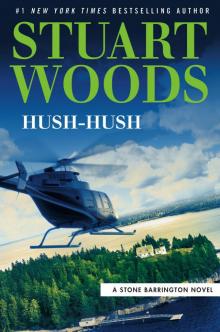 Hush-Hush
Hush-Hush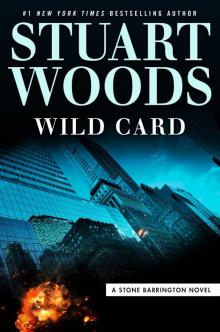 Wild Card
Wild Card A Delicate Touch
A Delicate Touch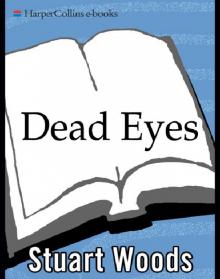 Dead Eyes
Dead Eyes Stealth
Stealth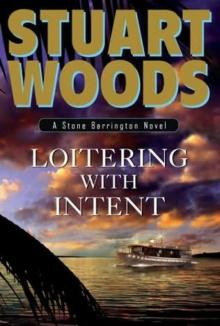 Loitering With Intent
Loitering With Intent Grass Roots
Grass Roots Scandalous Behavior
Scandalous Behavior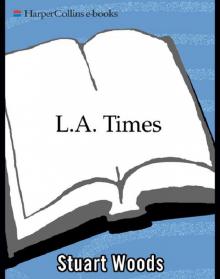 L.A. Times
L.A. Times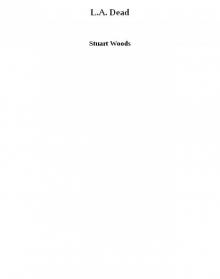 L.A. Dead
L.A. Dead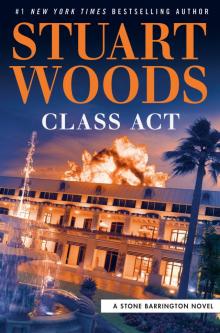 Class Act
Class Act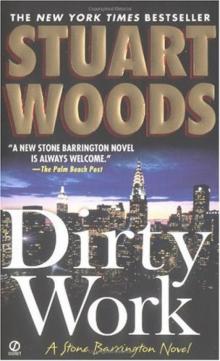 Dirty Work sb-9
Dirty Work sb-9 Bombshell
Bombshell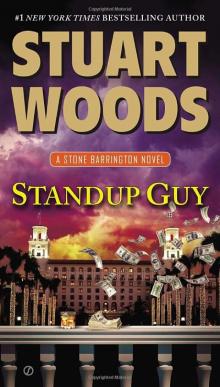 Standup Guy
Standup Guy Quick & Dirty
Quick & Dirty Stuart Woods Holly Barker Collection
Stuart Woods Holly Barker Collection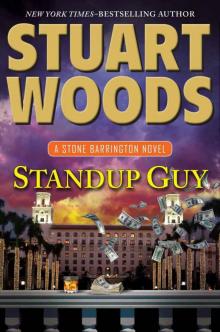 Standup Guy (Stone Barrington)
Standup Guy (Stone Barrington) Capital Crimes
Capital Crimes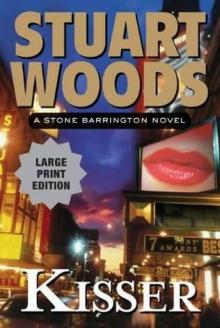 Kisser
Kisser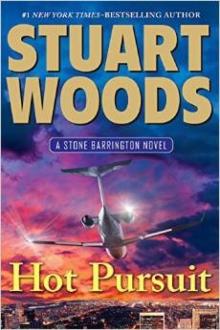 Hot Pursuit
Hot Pursuit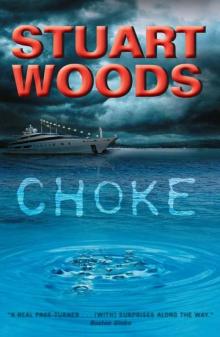 Choke
Choke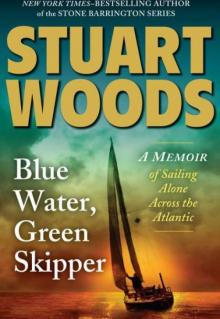 Blue Water, Green Skipper: A Memoir of Sailing Alone Across the Atlantic
Blue Water, Green Skipper: A Memoir of Sailing Alone Across the Atlantic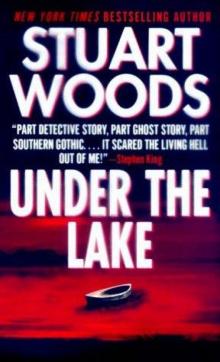 Under the Lake
Under the Lake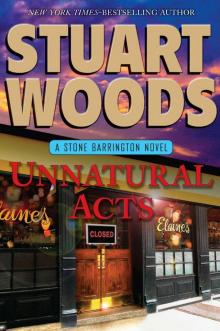 Unnatural acts sb-23
Unnatural acts sb-23 Doing Hard Time
Doing Hard Time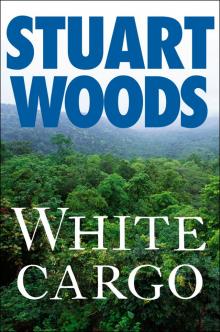 White Cargo
White Cargo The Prince of Beverly Hills
The Prince of Beverly Hills Severe Clear
Severe Clear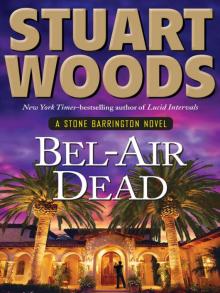 Bel_Air Dead
Bel_Air Dead Severe Clear sb-24
Severe Clear sb-24 Unnatural Acts
Unnatural Acts Dirt
Dirt Foreign Affairs
Foreign Affairs Unbound
Unbound Family Jewels
Family Jewels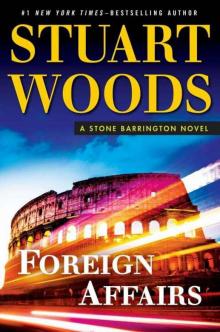 Foreign Affairs (A Stone Barrington Novel)
Foreign Affairs (A Stone Barrington Novel) The Ed Eagle Novels
The Ed Eagle Novels Dirty Work
Dirty Work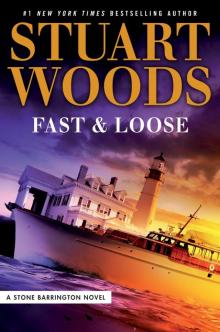 Fast and Loose
Fast and Loose Worst Fears Realized
Worst Fears Realized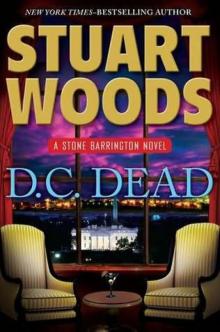 D.C. Dead
D.C. Dead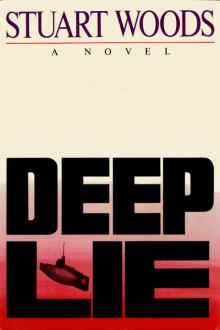 Deep Lie
Deep Lie Santa Fe Edge
Santa Fe Edge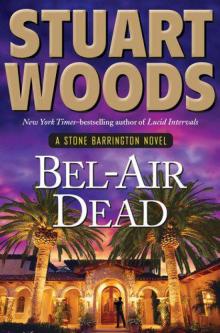 Bel-Air dead sb-20
Bel-Air dead sb-20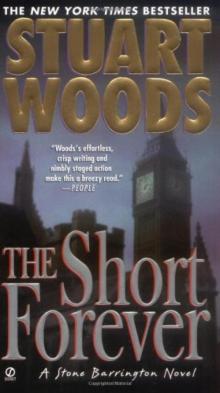 The Short Forever
The Short Forever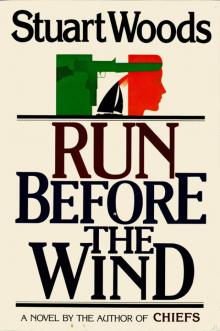 Run Before the Wind
Run Before the Wind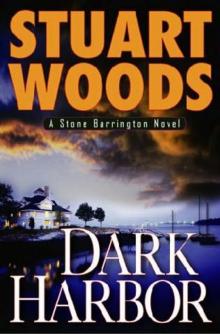 Dark Harbor
Dark Harbor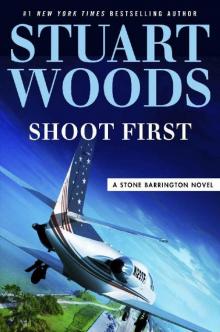 Shoot First (A Stone Barrington Novel)
Shoot First (A Stone Barrington Novel) Sex, Lies & Serious Money
Sex, Lies & Serious Money Santa Fe Dead 03
Santa Fe Dead 03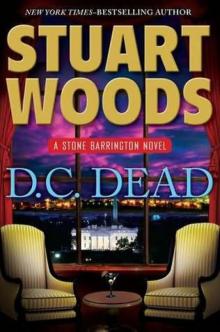 D.C. Dead sb-22
D.C. Dead sb-22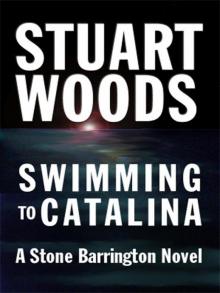 Swimming to Catalina
Swimming to Catalina Collateral Damage
Collateral Damage Hot Mahogany
Hot Mahogany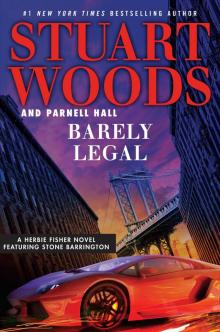 Barely Legal
Barely Legal Imperfect Strangers
Imperfect Strangers Paris Match
Paris Match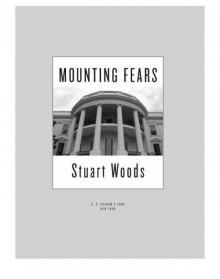 Mounting Fears
Mounting Fears Mounting Fears wl-7
Mounting Fears wl-7 Shoot Him If He Runs
Shoot Him If He Runs Short Straw
Short Straw Santa Fe Dead
Santa Fe Dead Dead in the Water
Dead in the Water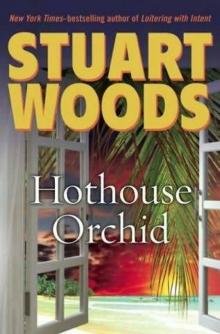 Hothouse Orchid
Hothouse Orchid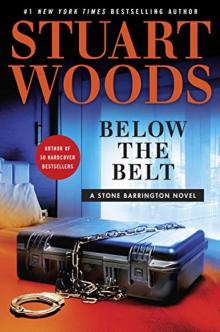 Below the Belt
Below the Belt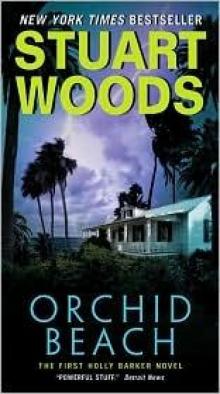 Orchid Beach hb-1
Orchid Beach hb-1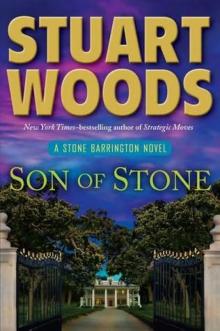 Son of Stone sb-21
Son of Stone sb-21 Cold Paradise 07
Cold Paradise 07 Blood Orchid
Blood Orchid Fresh Disasters
Fresh Disasters Lucid Intervals
Lucid Intervals Dishonorable Intentions
Dishonorable Intentions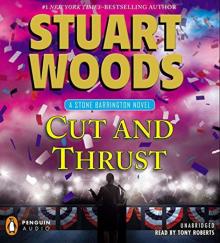 Cut and Thrust
Cut and Thrust The Money Shot
The Money Shot Santa Fe Rules
Santa Fe Rules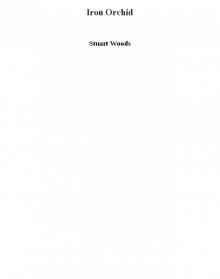 Iron Orchid
Iron Orchid New York Dead
New York Dead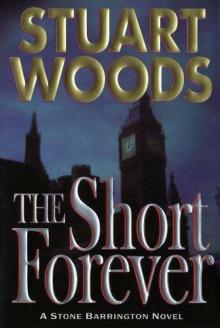 The Short Forever sb-8
The Short Forever sb-8 Son of Stone
Son of Stone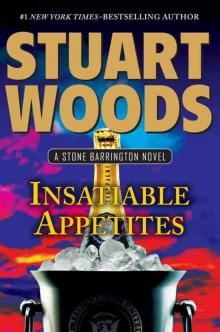 Insatiable Appetites
Insatiable Appetites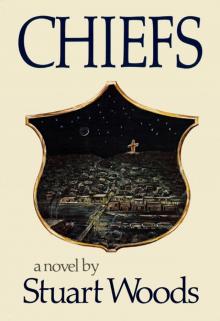 Chiefs
Chiefs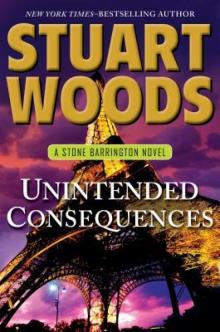 Unintended Consequences
Unintended Consequences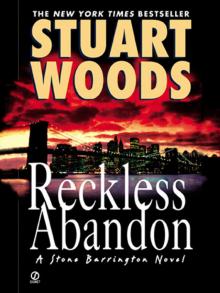 Reckless Abandon
Reckless Abandon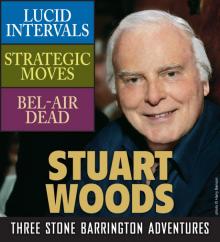 Three Stone Barrington Adventures
Three Stone Barrington Adventures Stuart Woods 6 Stone Barrington Novels
Stuart Woods 6 Stone Barrington Novels Shoot First
Shoot First Indecent Exposure
Indecent Exposure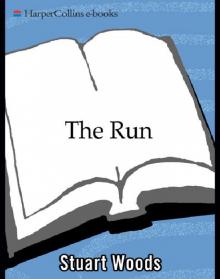 The Run
The Run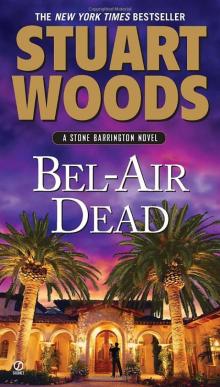 Bel-Air Dead
Bel-Air Dead Strategic Moves
Strategic Moves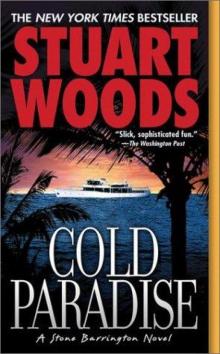 Cold Paradise
Cold Paradise